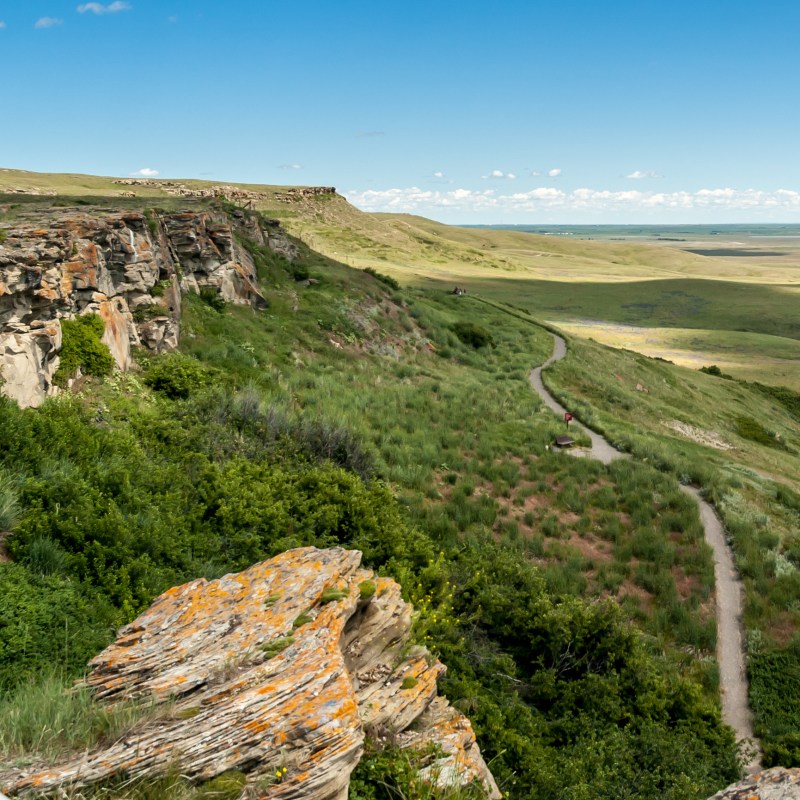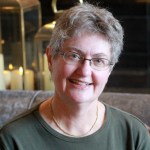
A road trip from Calgary to Vancouver has two main route choices. The popular Coquihalla route (about 11 hours drive time) uses Highway 1/the Trans-Canada Highway and Highway 5/the Coquihalla Highway. The southern route via Highway 3/the Crowsnest Highway takes about 14 hours.
Videos by TravelAwaits
In summer, the Crowsnest route offers many stops at towns, lakes, and parks. It’s doable in two days, more pleasant in three, and can easily be a vacation of a week or more.
In winter, people use both routes, but it’s not for the fun of the road trip, it’s to get from A to B. The ski resorts and snow trails all over British Columbia attract lots of visitors and the roads are maintained. However, apart from snow-centric destinations, many accommodations and tourist places close from about October to May. Bottom line: To simply get to Vancouver quickly, I’d use the Coquihalla route (described in our beautiful Canadian Rockies road trip: Calgary to Vancouver) year-round. If there was time for a proper road trip, I’d build my plan around the Crowsnest route between mid-April and mid-October.
Pro Tip: For weather and road conditions, in Alberta, phone 511 or check 511alberta.ca and the Alberta Motor Association (AMA) Road Reports. In British Columbia, look at the government’s DriveBC website and the BCAA’s website. Cellular reception can be spotty in the mountains.
The following list of stops begins with two scenic options: going south from Calgary to Nanton and then west to the Cowboy Trail, or going west from Calgary to join the Cowboy Trail sooner.
The difference? In Nanton, the Bomber Command Museum houses a restored Avro Lancaster Bomber. The other way includes a conservation area and a close-up of oil and gas history.

Calgary, Alberta
You could easily spend a few days here in my home city.
Calgary has many creative, beautiful places to eat. I like the River Cafe downtown and Rouge in the historic A.E. Cross House in Inglewood. The Blackfoot Truckstop Diner, at the opposite end of the spectrum, serves a reliable all-day breakfast.
We have a craft beer community, not just an industry.
There’s music, theater, sports, shopping, walking and cycling trails, museums, and art. Visit Calgary is the official tourism site.
The biggest annual event is the Calgary Stampede, a combination of rodeo, agricultural fair, and stage shows equalling a non-stop party, in July.
Before you leave Calgary, you can get into the Western spirit. At Fish Creek Provincial Park, enjoy a meal in the 1896 Bow Valley Ranche house, or, in summer, an ice cream cone and light lunch at another original ranch building, Annie’s Cafe.
Get an Alberta fishing license and try your luck in the world-class Bow River and other streams along the way. In British Columbia, you need a B.C. fishing license.
When it’s time to go, leave Calgary on Macleod Trail/Highway 2 heading south. For Nanton, carry on for an hour. The other option is to go west on Highway 22X at the south end of Calgary, toward Highway 22/Cowboy Trail.
The Nanton way misses the first two stops below, but with a little backtracking, you can join the Cowboy Trail for the third.
Ann And Sandy Cross Conservation Area
On Highway 22X, the Ann and Sandy Cross Conservation Area is 4,800 acres of a former ranch, now a wildlife preserve. Subject to the rules, visitors may hike on the trails among the native plants, watching for birds and animals.
Continue west on 22X and then turn right to take Highway 22/Cowboy Trail south.
Turner Valley
The Turner Valley Gas Plant, a national and provincial historic site, is a reminder of how Alberta’s oil and gas industry got started.
Nearby Eau Claire Distillery uses local ingredients to produce inspired spirits. Both the gas plant and the distillery offer tours.

Bar U Ranch National Historic Site
Past Longview, the Bar U Ranch, open seasonally, shows the working cowboy’s life in the early days.
Head-Smashed-In Buffalo Jump World Heritage Site
A side trip about an hour east of Lundbreck, Head-Smashed-In Buffalo Jump is a UNESCO World Heritage Site. Together, the interpretive center and site do a superb job of explaining how the Blackfoot people depended on the bison (buffalo), and how close their relationship to the great beast was.
This is a valuable archaeological site where for about 6,000 years, people used to hunt bison (buffalo) by driving herds over the cliffs. The visit starts indoors and then moves outside for an easy walk. It’s open seasonally.
The last stop in Alberta comes after you turn off Highway 22 onto Highway 3/Crowsnest Highway and head west toward British Columbia.

Frank Slide
At 4:10 a.m. on Wednesday, April 29, 1903, a piece of Turtle Mountain slid down, burying part of the town of Frank, killing 110 of its 600 inhabitants.
Unlike the lush forests and solid cliff faces of the Rocky Mountains, the Frank Slide is a barren, almost moon-like boulder field that’s difficult to walk on. Fortunately, there’s a boardwalk and an explanation of what happened at the Frank Slide Interpretive Centre.
Fernie, British Columbia
The mountain town of Fernie has ski hills, golf, fishing, hiking, mountain biking, rafting — a full range of outdoor activities as well as choices for eating and drinking. Tourism Fernie is the go-to site for tourist information.

Fort Steele, British Columbia
Just north of Cranbrook, Fort Steele Heritage Town was hopping during the gold rush but became a ghost town until coming back to life as a heritage town in the 1960s. There are almost 100 buildings, a steam train (rides in July and August), rare breeds of farm animals, and skilled tradespeople at work, 1890s style.
Kootenay Lake Ferry
A fun detour, instead of driving from Creston to Salmo, is to go up the east side of Kootenay Lake to take the free ferry across. This map from Nelson-Kootenay Lake Tourism shows some choices for lakeside stops en route.

Nelson, British Columbia
Nelson has an artsy and historic feel as well as year-round outdoor sports. Thanks perhaps to the setting and the music program at local Selkirk College, this area is a festival hotspot. The celebration of indie music and arts at Tiny Lights Festival breaks the mold, with a leave-no-trace sustainability ethic and community-wide participation up in nearby Ymir.
Christina Lake, British Columbia
Lakes and mountains are what British Columbia is all about, especially in summer. Christina Lake is loved for its warm water and family-friendly atmosphere.

Osoyoos, British Columbia
Osoyoos Lake is Canada’s warmest, which isn’t just good for recreation; it’s also great for orchards and vineyards. If you’re into wine tours, start here. For more wine, detour north into the Okanagan Valley for a few days.

E.C. Manning Provincial Park
From Osoyoos to E.C. Manning Provincial Park, there’s an elevation gain of about 3,500 feet. The air gets cooler and the orchards give way to the forest.
This is a pleasant place for hiking, whether for an hour’s break from driving or a multi-day stay.
Hope, British Columbia
The mountain driving ends at the little town of Hope.
In my piece on the beautiful Canadian Rockies road trip from Calgary to Vancouver, I tell a bit more about Hope and the intriguing Othello Tunnels above it.
Drive straight on to Vancouver via the Trans-Canada Highway or take a side trip and a relaxing break at Harrison Hot Springs.

Vancouver, British Columbia
Vancouver, on the Pacific Ocean, is a major Canadian city with music, art, hiking, cycling, beaches, professional sports, winter sports, and a range of foodie experiences. It’s easy to spend a few days here.
This is a cruise ship port for trips up the coast to Alaska. BC Ferries has service from various terminals to Vancouver Island, the Sunshine Coast, and other islands. Continue your British Columbia road trip from Vancouver to Victoria the scenic way, or go directly by ferry from Tsawwassen to Swartz Bay.
Pro Tips
The official tourist information sources for these areas are Travel Alberta and Travel British Columbia. Each province has its own system for camping reservations in the provincial parks; see Alberta Parks and BC Parks.
Except for the Ann and Sandy Cross Conservation Area, the attractions listed here are generally accessible to people who use wheelchairs. Please check the individual websites for particulars.
Throughout interior British Columbia, there are a number of ghost towns, often with mining histories. I visited abandoned Phoenix, British Columbia, after reading about it on a diner placemat.
The drive from Calgary to Vancouver via the Crowsnest Pass can last all summer if you have time. There’s lots to explore.
